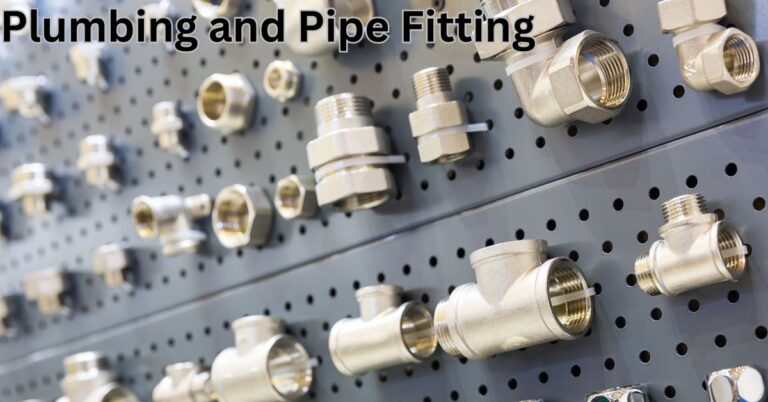Plumbing and Pipe Fitting: The Upsides and Downsides
Plumbing and pipe fitting are essential trades in the construction and maintenance of buildings and infrastructure. These professions involve the installation, repair, and maintenance of piping systems that transport water, gas, and waste. While both trades offer rewarding career opportunities, they also come with their own set of challenges. In this article, we will explore the upsides and downsides of plumbing and pipe fitting to help you make an informed decision if you are considering a career in these fields.
The Upsides of Plumbing and Pipe Fitting
1. Job Stability and Demand
One of the most significant advantages of pursuing a career in plumbing and pipe fitting is the high demand for skilled professionals. With the ongoing construction of new buildings and the need for maintenance of existing infrastructure, plumbers and pipe fitters are always in demand. This demand translates to job stability, which is a crucial factor for anyone looking to build a long-term career.
2. Good Earning Potential
Plumbers and pipe fitters often earn competitive wages. According to the U.S. Bureau of Labor Statistics, the median annual wage for plumbers, pipe fitters, and steamfitters was $56,330 in 2020. Experienced professionals and those who work in specialized areas can earn even higher salaries. Additionally, many plumbers and pipe fitters have the opportunity to work overtime, which can significantly boost their income.
3. Opportunities for Advancement
The plumbing and pipe fitting trades offer numerous opportunities for career advancement. With experience and additional training, professionals can move into supervisory or management roles, start their own businesses, or specialize in areas such as pipe welding or HVAC (heating, ventilation, and air conditioning) systems. This potential for growth can make these careers particularly appealing for those with long-term aspirations.
4. Hands-On Work and Job Satisfaction
For individuals who enjoy working with their hands and solving practical problems, plumbing and pipe fitting can be highly satisfying careers. These trades involve a variety of tasks, from installing new systems to troubleshooting and repairing existing ones. The tangible results of their work—such as a newly installed plumbing system or a repaired leak—can provide a strong sense of accomplishment.
5. Independence and Flexibility
Many plumbers and pipe fitters work independently or run their own businesses. This independence allows for greater flexibility in terms of work hours and job selection. Self-employed professionals can choose the projects they want to work on, set their own schedules, and potentially earn more by taking on additional work.
The Downsides of Plumbing and Pipe Fitting
1. Physical Demands and Risks
One of the primary downsides of plumbing and pipe fitting is the physical nature of the work. These trades require a significant amount of manual labor, including lifting heavy materials, working in confined spaces, and standing or kneeling for extended periods. This physical strain can lead to injuries and long-term health issues, such as back problems and joint pain.
2. Exposure to Hazardous Materials
Plumbers and pipe fitters often work with hazardous materials, including chemicals, asbestos, and raw sewage. Exposure to these substances can pose serious health risks if proper safety precautions are not followed. Additionally, working with pressurized systems and power tools can lead to accidents and injuries if safety protocols are not strictly adhered to.
3. Irregular Hours and On-Call Work
The nature of plumbing and pipe fitting work often requires professionals to be available for emergencies, which can lead to irregular hours and on-call work. Burst pipes, gas leaks, and other urgent issues can occur at any time, requiring immediate attention. This unpredictability can make it challenging to maintain a consistent work-life balance, particularly for those with families.
4. Initial Training and Apprenticeships
Becoming a qualified plumber or pipe fitter typically requires several years of training and apprenticeship. While this hands-on training is invaluable, it can be a significant time commitment and may involve relatively low pay during the apprenticeship period. Additionally, obtaining the necessary licenses and certifications can require passing challenging exams and adhering to strict regulatory standards.
5. Market Competition
While there is strong demand for plumbers and pipe fitters, there is also significant competition in the market. Establishing a successful business or securing a steady stream of clients can be challenging, particularly for those who are just starting their careers. Building a good reputation and a loyal customer base takes time and effort.
Balancing the Pros and Cons
Choosing a career in plumbing or pipe fitting requires careful consideration of both the upsides and downsides. The high demand and earning potential, opportunities for advancement, hands-on work, and independence are compelling reasons to pursue these trades. However, the physical demands, exposure to hazards, irregular hours, initial training requirements, and market competition are important factors to weigh.
For those who are physically fit, enjoy problem-solving, and are willing to put in the effort to gain the necessary skills and experience, plumbing and pipe fitting can offer rewarding and stable careers. On the other hand, individuals who are concerned about the physical strain or irregular hours may want to explore other career options within the construction and maintenance industries.
Conclusion
Plumbing and pipe fitting are vital trades that play a crucial role in maintaining and improving our built environment. While these careers offer numerous benefits, including job stability, good earning potential, and opportunities for advancement, they also come with their own set of challenges. By carefully considering the pros and cons, aspiring plumbers and pipe fitters can make informed decisions about whether these trades are the right fit for their skills, interests, and long-term career goals.

